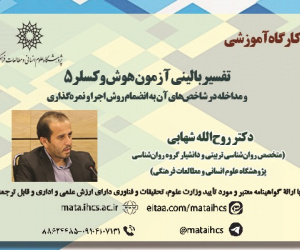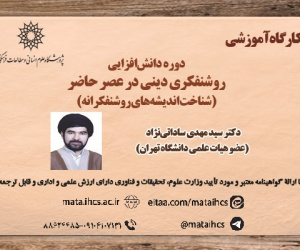تقویت ارتباط انسان با طبیعت در طراحی منظر محلی از طریق برنامه ریزی ارتباطی و گفتگو (نمونه موردی: شهر سورمق، استان فارس) (مقاله علمی وزارت علوم)
درجه علمی: نشریه علمی (وزارت علوم)
آرشیو
چکیده
این تحقیق با هدف بررسی نقش ارزش ها، ریشه های فرهنگی و دانش محلی در طراحی منظر شهر سورمق در استان فارس انجام شده است. پژوهش با رویکردی میان رشته ای و اتکا بر نظریه برنامه ریزی ارتباطی، گفتگو و نظریه انتخاب دیویدف و راینر به عنوان چهارچوب نظری اصلی، به دنبال ارائه راهبردها و راه حل هایی برای بازسازی و تقویت ارتباط نسل های جدید با طبیعت و حفظ هویت و فرهنگ محلی است. روش شناسی این تحقیق از نوع کیفی و تفسیری و مبتنی بر برگزاری نشست های گفتگومحور و صمیمانه با ساکنان بومی، به ویژه کهنسالان، جهت استخراج ارزش ها، تجارب و الگوهای بومی مدیریت منابع بوده است. یافته ها شامل راهبردهایی مانند: مشارکت مردم محلی، توجه به حواس چندگانه در طراحی، پرهیز از الگوبرداری غربی و برنامه های آموزشی جامع می باشد. همچنین راه حل های عملی مانند: ایجاد فضاهای بازی طبیعی، باغ های اجتماعی، باغ های انرژی پایدار، باغ های حسی و فضاهای میکروطبیعت پیشنهاد شده است. نتایج این تحقیق می تواند به توسعه روش های مشارکتی و افزایش ارتباط با طبیعت در فرآیند طراحی منظرهای محلی کمک کند و در نهایت گامی در جهت ارتقای کیفیت زندگی، حفظ و بازسازی هویت فرهنگی و محیطی جوامع باشد.Enhancing Human-Nature Connection in Local Landscape Design through Communicative Planning and Dialogue (Case Study: Sormagh City, Fars Province, Iran)
This study investigates the role of values, cultural roots, and local knowledge in the landscape design of Sormagh City, Fars Province. Adopting an interdisciplinary approach, the research draws upon theories of communicative planning, dialogue, and choice theory to propose strategies for restoring and enhancing the connection between younger generations and nature, while preserving local identity and cultural heritage. The research employs a qualitative and interpretive methodology, centered on conducting dialogue-based and informal sessions with local residents, particularly the elderly, to extract values, experiences, and indigenous patterns of resource management. The findings reveal key strategies, including active participation of local communities, multisensory engagement in design, avoidance of Westernized models, and the implementation of comprehensive educational programs. Practical solutions such as the development of natural play areas, community gardens, sustainable energy gardens, sensory gardens, and micro-nature spaces are also presented. The outcomes of this research contribute to advancing participatory design methods and fostering deeper human-nature connections in local landscape projects. Ultimately, the study seeks to enhance quality of life and facilitate the preservation and revitalization of cultural and environmental identity within communities.







